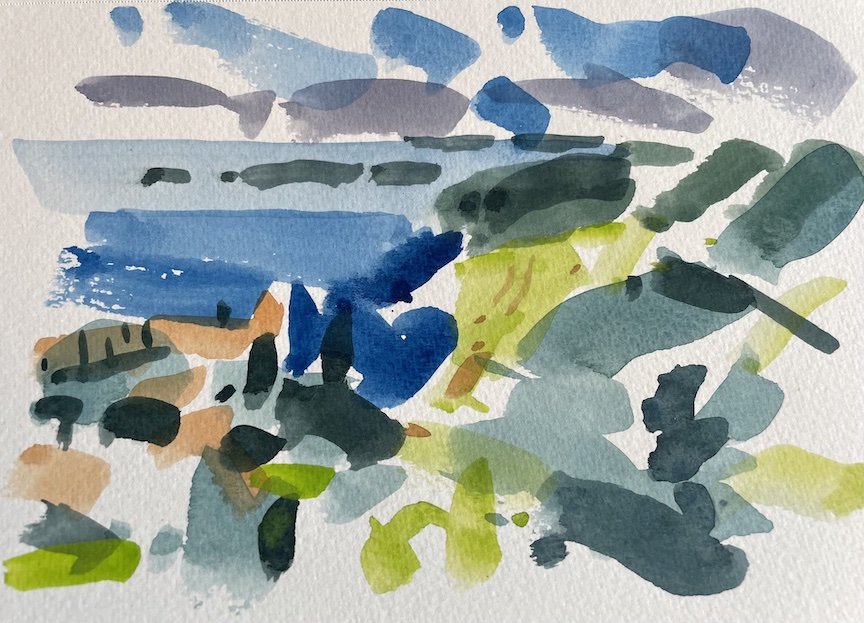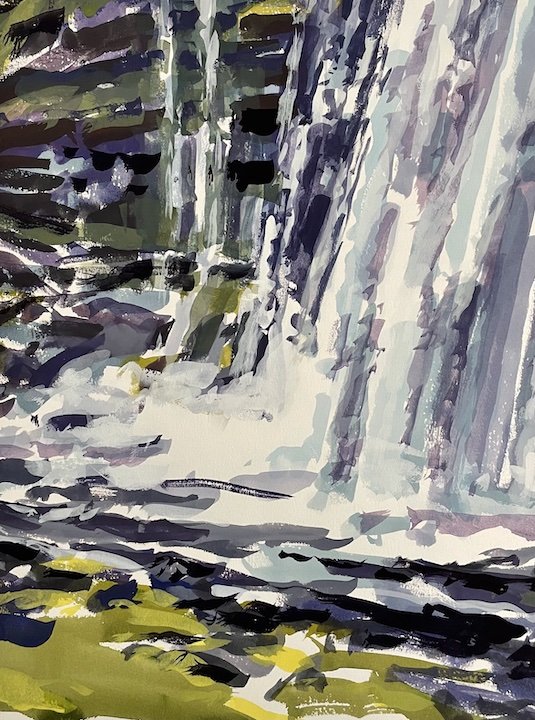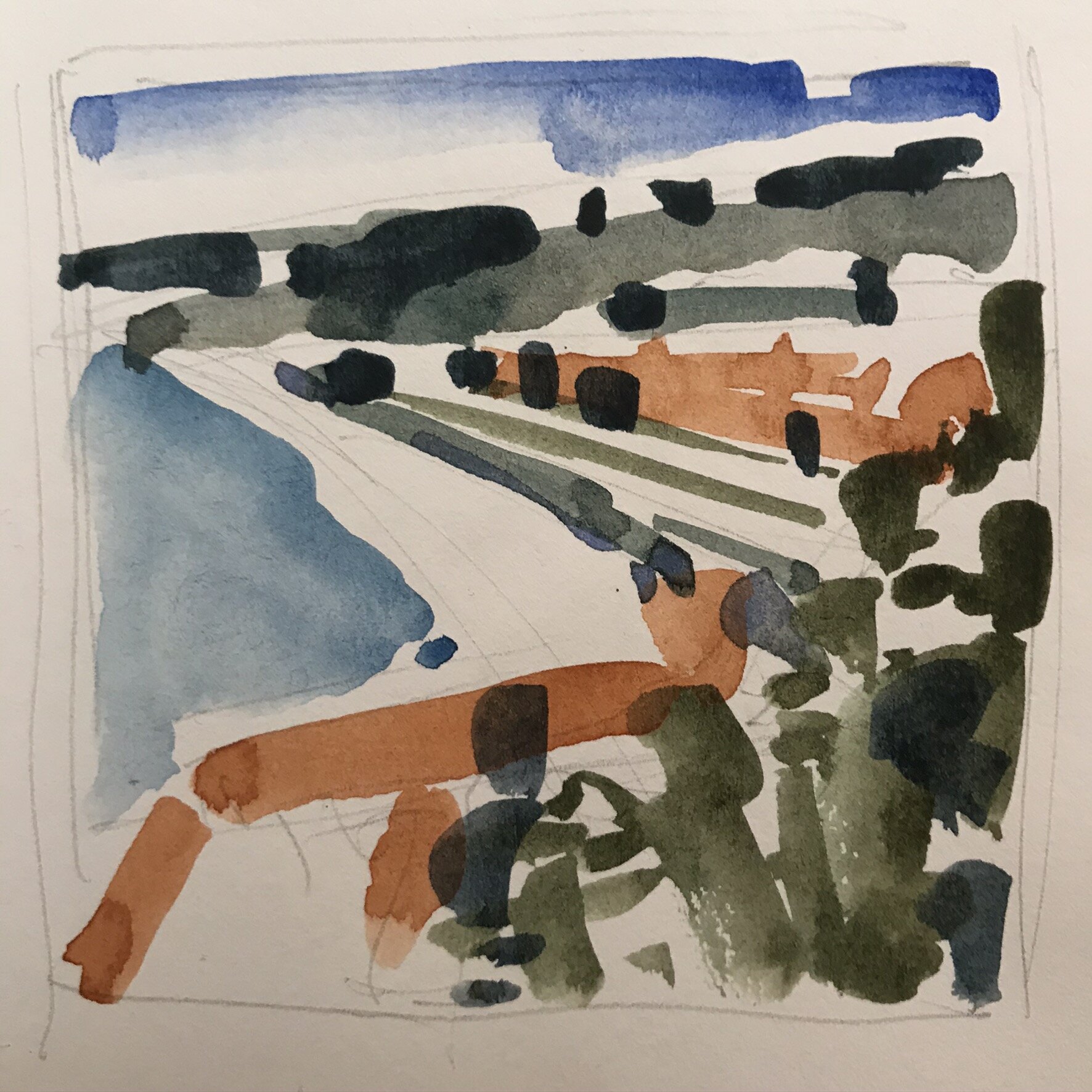Elizabeth Moss Gallery – May 24 – July 20
I enjoy exploring quarries, and I’m fortunate to have several nearby in Washington and Hancock Counties. The abandoned remains of the Nineteenth Century granite industry, Maine quarry structures are reminiscent of monuments in scale and permanence. Scarred land surrounded by randomly scattered granite fragments, create a memory, and leave a history of industrial activity. Their vertical faces reflect light and shadow, and contrast with the fluid movement of water that often fills pits with flickering light and reflections of nature, growing erratically in shallow rocky clefts along the perimeter. Quarries are resilient, overgrown environments that impart a feeling of secret or intimate sanctuaries. These qualities have fueled my artistic practice for the past four years.
I also enjoy walking or paddling along Maine shorelines, which share many characteristics with quarries and provide their own monument to geologic history. I am drawn to the edges between solid and fluid, volume and surface, stillness and movement, and to the complex relationships between these elements.
Sullivan Quarry Pool, 40x30, oil, 2024 (Photo credit, Ken Woissard)
Along the Edge, Wohoa Bay, 24x24, oil, 2024























































































































































































